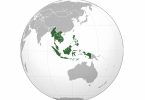The Asia and Pacific region will bear the brunt of the drop in travel due to the global spread of the virus
Over the last two decades, the World Tourism Organization has only twice reported a fall in the number of international tourist arrivals worldwide. The first was in 2003 when there was a small drop of 3 million tourists worldwide, mainly due to the SARS virus which was particularly prominent in East Asia. Arrivals in East Asia fell by 9%, and in the Americas by 2%, but moderate growth in Europe (2%), Africa and the Middle East almost levelled things up globally.
The second time was in 2009 when an almost perfect storm of the global recession coincided with the swine flu pandemic which killed over 200,000 people. In 2009 the tourism sector was hit particularly hard with arrivals worldwide falling by 4%. This time all regions (with the exception of Africa) recorded a decline in tourist arrivals, with the popular tourist destinations of Europe and the Americas both down by 5%.
With the emergence of the coronavirus COVID-19 in January 2020, it is still very early to confidently predict the impact it will have on the tourism sector over the coming year. However, there are already some clear trends and statistics emerging:
• In 2003 when SARS struck, China was a relative minor in the global outbound tourism economy, spending around $50 billion. In 2019 the Chinese spent over $280 billion, so the global impacts of COVID-19 are expected to be much greater than those of SARS.
• Travel to Asia is being hit particularly hard. Whilst demand for China has, for now, significantly diminished, many other key tourism destinations in the region are starting to spot a fall in demand, including Vietnam, Thailand, Cambodia, Malaysia, Singapore, and even countries such as India.
• Amongst consumers, there is still a strong desire to travel despite the warnings of medical officers around the world. Tour operators and travel agents are experiencing significant numbers of cancellations to destinations in Asia, but many are looking elsewhere instead, including South America and the Caribbean.
• The staycation is expected to benefit, in particular in North America and Europe. With the virus hitting at just the time when the summer holiday booking season is at its height, many consumers are making the decision to travel domestically in 2020.
Based on current research, and the assumption that the COVID-19 virus will continue to spread and peak by April this year, Acorn estimates that there will be a 4% drop in the number of international tourist arrivals worldwide in 2020, the same as in 2009 when the global recession combined with the swine flu pandemic.
However this time it will be the Asia and Pacific region that will be the hardest hit, with a fall in arrivals of almost 19%. All the other regions in the world are expected to see tourist arrivals grow, although rates will be marginal in Europe and the Americas where domestic tourism will flourish.
Source: Kevin Millington























